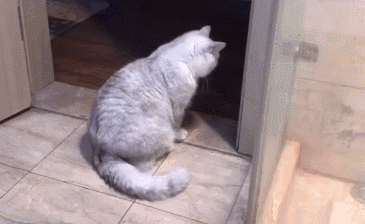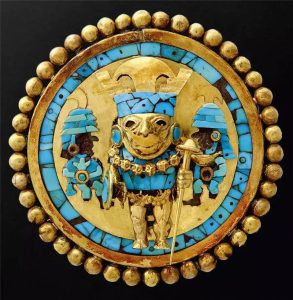When it hurts, they’ll know. Cats often exhibit some baffling behaviors that leave us wondering if they truly realize that it’s their own tail! For example, they might get startled by their own tail, chase it around, or even gnaw on it until they’ve worn off some of the fur…
-
Cats Chasing Their Tails – Likely Just Playing
Hunting and chasing are instincts for cats, but to become skilled hunters, they need to practice and learn. They must improve their ability to judge distance, height, speed, and more. So, when there’s a moving object in their line of sight—like their tail (no matter whose tail it is)—it becomes the perfect tool for a kitten to practice their hunting skills.
-
Why Do Cats Bite Their Own Tails?
Kittens begin grooming their fur around the 4th to 5th week of life, so they know their tail is part of their body. However, during chasing, the tail’s voluntary muscles are controlled by both the nervous system and consciousness. In other words, their tail moves freely without the brain’s direct control, so at first, a cat might not realize it’s their own tail. It’s only when they bite it and feel the pain that the message travels to the brain, and the cat “snaps out of it” and realizes what’s going on.

-
Excessive Licking or Biting of the Tail Could Be a Problem
If it’s not just playful hunting, but your cat constantly licks or bites their tail (usually the tip), there might be an underlying issue. Possible causes include:Parasites: These can cause skin irritation and itching, leading your cat to chase and bite their tail in frustration.Stress and Boredom: Cats may develop compulsive behaviors, like excessive grooming or tail biting, to alleviate anxiety or boredom.Skin or Food Allergies: Itchy skin from allergies may drive them to chew or scratch their tail for relief.Hyperesthesia Syndrome: This rare condition causes excessive sensitivity in the skin, leading cats to jump at sudden movements, twitch their back skin, or attack their own tail.
-
How to Stop Your Cat from Excessive Tail Biting?
Start by taking your cat for a health check-up to rule out parasites, skin allergies, food allergies, injuries, or possible hyperesthesia syndrome.You can also try enriching your cat’s environment by providing more toys, playing with them more often, and making their life more stimulating!
By around 7 days of age, the nerve-muscle reflexes related to pain in kittens are fully developed. So, pulling, tugging, or biting a cat’s tail will cause them pain! Feel free to leave a comment or share photos in the comment section—let’s exchange cat care tips and stories!





